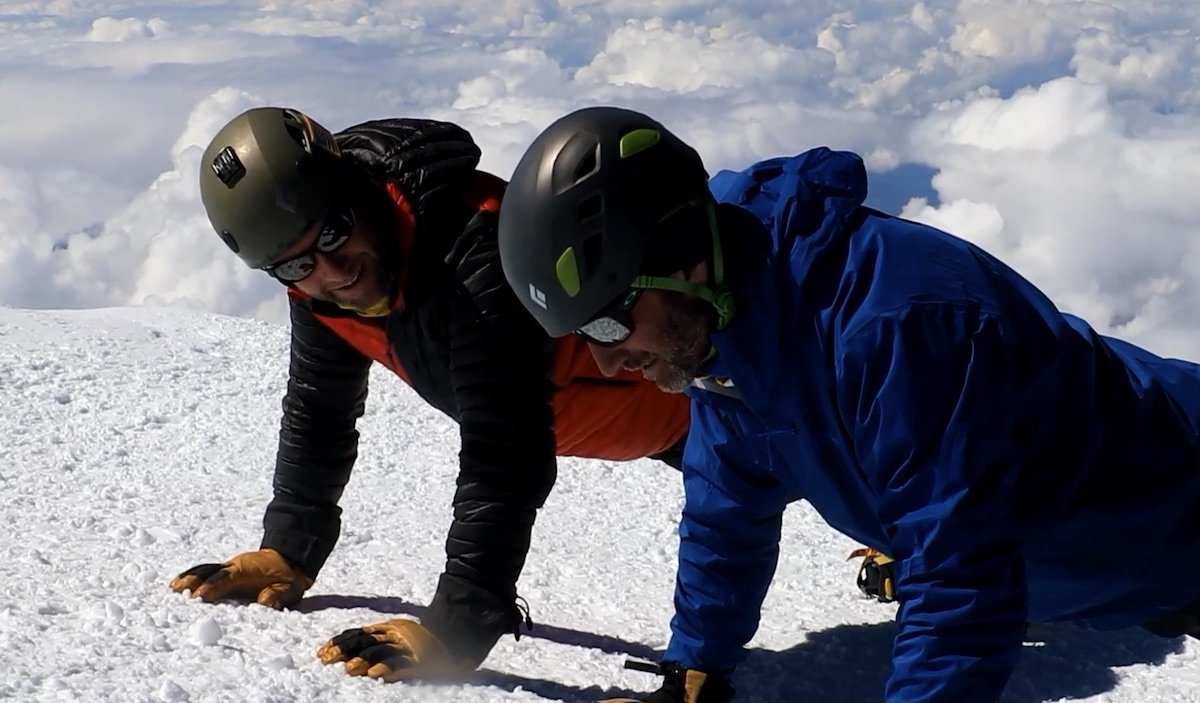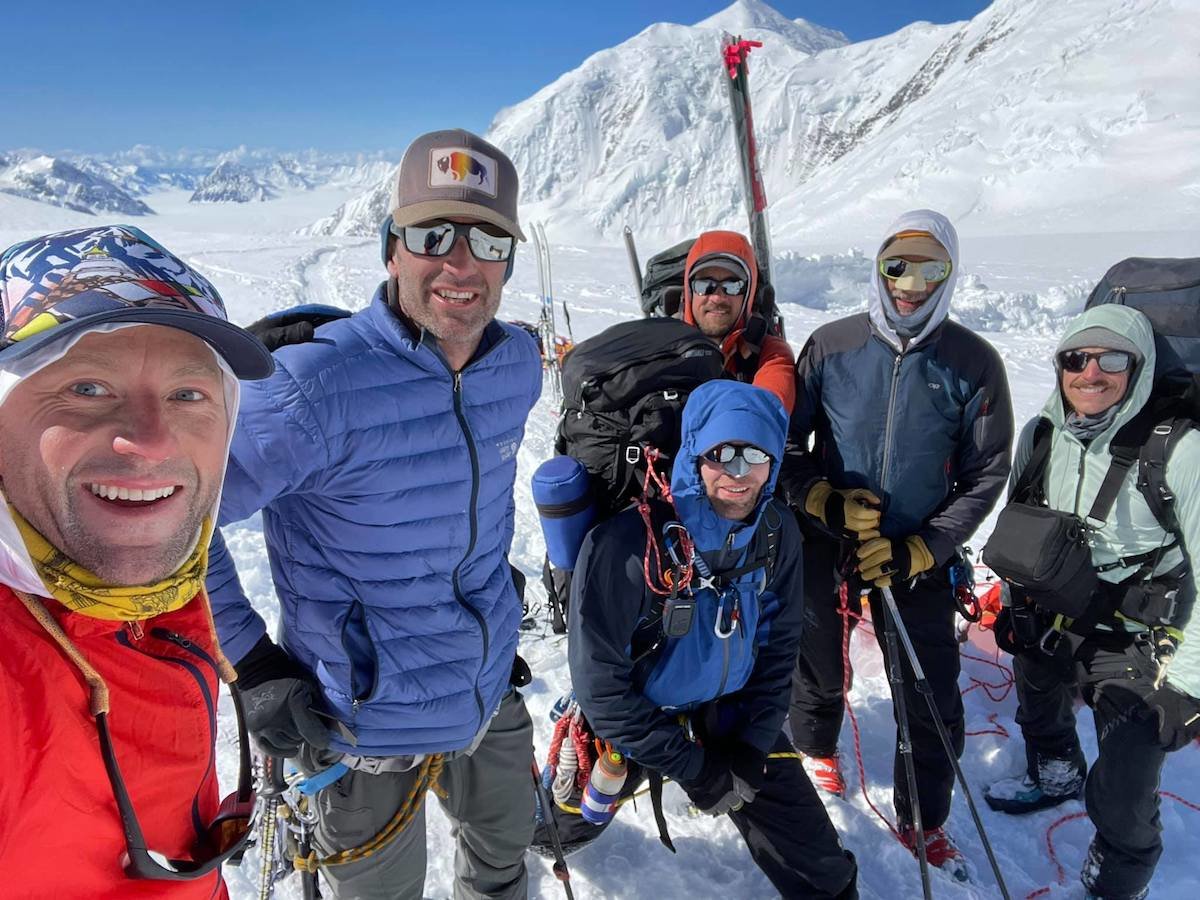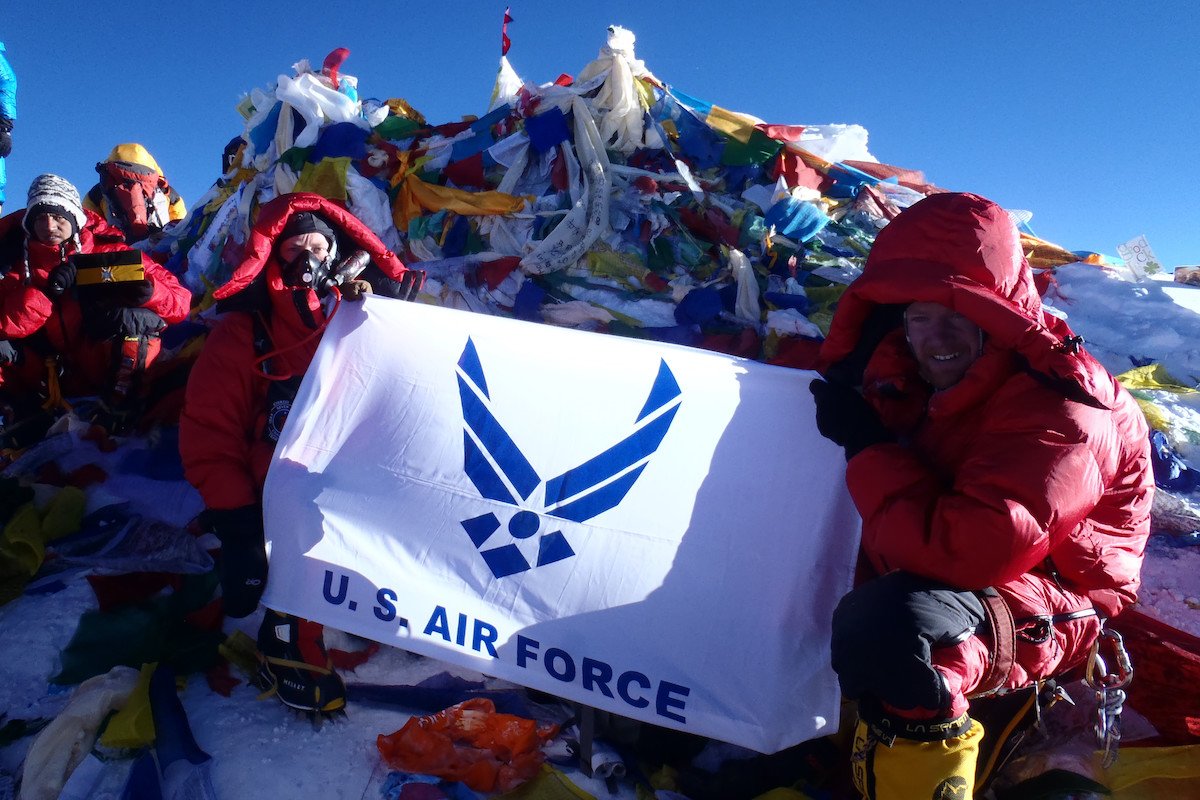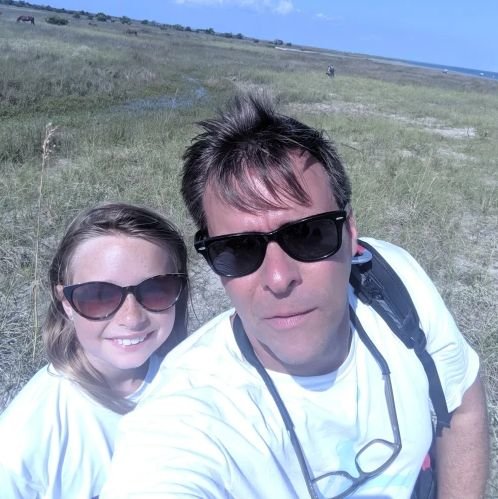‘Pushups on Top of America’ — Air Force Team Knocks Out 20 on 20,310-Foot Denali Summit

Air Force Lt. Col. Rob Marshall and Lt. Col. Mark Uberuaga knocked out 20 pushups on the summit of Denali in Alaska to honor fallen service members. Video screenshot courtesy of DVIDS.
A question for the pushup police: Is it considered “good form” if your back is straight and your elbows break 90 degrees, but your butt is pushed up higher than anyone else’s in North America?
That was Air Force Lt. Col. Rob Marshall’s starting position for a set of 10 pushups in June as he led an Air Force climbing group to the summit of Alaska’s Denali, the highest mountain in North America. In a video the service released Monday, Marshall leads his team of current and former Air Force members in 10 pushups as a memorial to fallen service members — then he pulls a “that guy” move and suggests they do 10 more. “I feel like we could do 20 because it’s 20,000 feet,” he yells in the video. One climber yells back a hardy “Yeah!” while the climber next to Marshall, Lt. Col. Mark Uberuaga, well, kind of gives Marshall a look.
The group finishes the last 10, and Marshall, a V-22 pilot, declares to the camera they were doing “pushups on top of America.”
On the 20,310-foot summit of Denali in Alaska, Air Force Lt. Col. Rob Marshall and Lt. Col. Mark Uberuaga do 20 pushups to honor fallen service members.
Marshall was the leader of a team of six Air Force members and veterans, plus a videographer, that set out in late May to climb the tallest mountain in North America. The team is part of the 50 States 50 Summits Challenge, an initiative to fly the Air Force flag at the highest point of all 50 states. The project grew out of a group Marshall formed a decade ago, USAF Seven Summits Challenge, that sought to bring Air Force vets on trips to each of the tallest summits on every continent — the so-called Seven Summits of mountaineering. The group summited Mount Everest in 2013.
At the top of each peak, the climbers do pushups to honor fallen service members.
The pictures and video the Air Force released this week show a gorgeous summit day with unlimited visibility, including a phenomenon often experienced on Denali: being able to look out at blue skies over the top of surrounding cloud and weather systems.

But the trip was not without some drama. Just shy of the summit, a team member developed a medical condition and had to be evacuated by a specialized high-altitude helicopter at 19,500 feet.
“At this point one of our climbers collapsed and the situation became more critical. We got him into a sleeping bag and administered medicine for cerebral edema,” Marshall wrote on the group’s Facebook page.
The specialized helicopter hovered over the camp as the team loaded the sick climber into a litter hanging from the helicopter on a cable. To make the pickup, Marshall said, the helicopter had to hover at the highest altitude at which the veteran pilot had ever performed a rescue.
The climb, which took place in late June, took Denali’s West Rib route up the mountain, a more demanding and technical route than the so-called West Buttress route that 90% of Denali climbers take. The team followed the traditional route to Denali’s 14,200-foot camp, the final major rest stop and base camp for most teams, staffed by National Park Service rangers and medical professionals. From there, most climbers continue up the West Buttress, a relatively straightforward route to the summit on terrain that allows for a simple retreat or sheltering in an emergency. The West Rib route strikes out directly across the face of the mountain and then climbs steep, unforgiving terrain that offers no easy escape or shelter.
Marshall and Uberuaga, both Air Force pilots, founded the original Air Force Seven Summits team early in their careers. The Denali team included Maj. Marshall Klitzke, veterans Wesley Morgan and Mark Schaffeld, and civilian videographer Matt Wheat.

Various videos the team had shot and the Air Force shared show life on the mountain for the climbers in camp, on the trail, and even dramatic footage of Marshall radioing from inside his tent to a circling rescue helicopter. In a video shot on the final climb to the summit, Marshall said the group had seen an F-22 fly overhead (a squadron of the jets is based at Joint Base Elmendorf-Richardson in Anchorage, about 200 miles south of Denali) and guessed that the temperature was minus 20.
And apparently, at some point, there were quesadillas.
Videos below show the team climbing and skiing downhill after summiting Denali.
Read Next:

Matt White is a former senior editor for Coffee or Die Magazine. He was a pararescueman in the Air Force and the Alaska Air National Guard for eight years and has more than a decade of experience in daily and magazine journalism.
BRCC and Bad Moon Print Press team up for an exclusive, limited-edition T-shirt design!
BRCC partners with Team Room Design for an exclusive T-shirt release!
Thirty Seconds Out has partnered with BRCC for an exclusive shirt design invoking the God of Winter.
Lucas O'Hara of Grizzly Forge has teamed up with BRCC for a badass, exclusive Shirt Club T-shirt design featuring his most popular knife and tiomahawk.
Coffee or Die sits down with one of the graphic designers behind Black Rifle Coffee's signature look and vibe.
Biden will award the Medal of Honor to a Vietnam War Army helicopter pilot who risked his life to save a reconnaissance team from almost certain death.
Ever wonder how much Jack Mandaville would f*ck sh*t up if he went back in time? The American Revolution didn't even see him coming.
A nearly 200-year-old West Point time capsule that at first appeared to yield little more than dust contains hidden treasure, the US Military Academy said.












